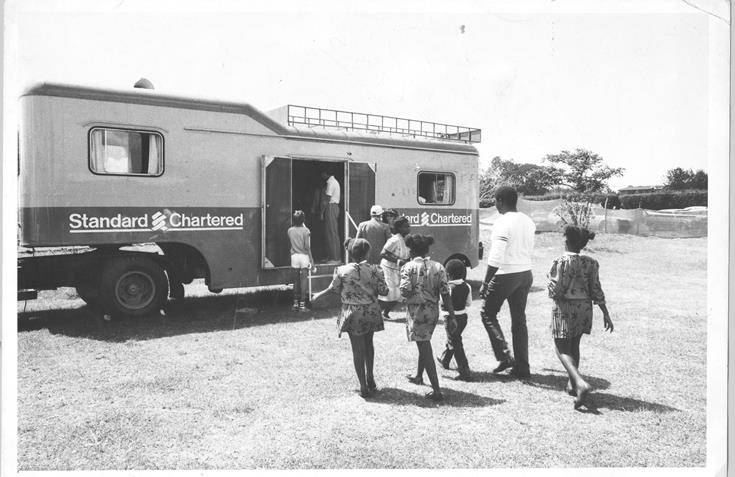The Quirky Past Of Kenyan Mobile Banking Was ‘Mobile Banking’, Literally

Mobile banking; it’s only a pair of bi-syllabic words but today it stands for something that has immeasurable importance.
It feels like another lifetime now when people drove miles just to learn if a given sum has landed in their bank account, or wait a full 30 days just to have a cheque processed.
But, in reality, it wasn’t that long ago when the lone bank branch that was the only one available within a 1000-kilometre radius would be inundated with hundreds of people who just needed to transfer a small sum.
Today, bank branches still see significant foot traffic, but at least people have a much better and more convenient choice now: mobile banking.
Over the years, the global financial system has increasingly adopted mobile banking infrastructure, making it possible for just about anyone to access a full suite of financial services – savings, withdrawals, payments, transfers, loans, insurance, etc. – from just about anywhere provided they have a mobile device (from the most basic feature phones to the most sophisticated tablets).
One country that epitomises the mobile banking revolution more than most and is even often used as a global reference point for illustrating the impact of mobile banking is Kenya.
Today, the ubiquitous M-Pesa mobile money platform, which was only a phone-based peer-to-peer money transfer service in Kenya at the time of its launch in 2007, has grown into what is essentially a full-blown mobile banking platform offering a wide range of financial services to basically all of Kenya.
As things stand, tens of billions of dollars are transacted on the M-Pesa platform every year in billions of transactions, and the service has driven financial inclusion in Kenya to over 80 percent – much more than the global average.
Nowadays, mobile banking is well and truly at home in Kenya and banks have since taken to it, starting from 2010 when Family Bank launched the first bank-led mobile banking platform in Kenya.
These days, mobile banking almost feels like the norm while visiting bank branches seems like a final recourse that is adopted only when absolutely necessary for a lot of people. But mobile banking used to mean something very different in Kenya not too long ago. Indeed, mobile banking in Kenya was quite literally “mobile banking” not that long ago.
In 2004, Co-operative Bank (Co-Op Bank), one of Kenya’s oldest banks, introduced mobile banking in Kenya, an endeavour that was lauded as an “innovative system of banking” at the time. It didn’t happen on electronic devices, alright, but it was kind of a gamechanger at the time.
At that time, mobile devices weren’t as ubiquitous as they are today, so Co-Op bank introduced a brand of mobile banking that was mobile in that banks were sort of put on vehicles and driven to strategic spots.

Image Source: Kenyan Wallstreet
It worked such that certain employees of the bank would drive marked vans, in the company of armed cops, to bubbly parks and markets and service clients for 4-5 hours before driving back to the bank in time for the end of the day reports at the branch.
The service allowed customers to check their account balance, request statements and track the status of cheques, but it did not facilitate the actual transfer of money. That only became a possibility with the launch of M-Pesa by Kenya’s largest telco, Safaricom.
These days, a cursory Google image search for “mobile banking” anywhere almost entirely turns up loads of images that depict financial services being accessed via mobile phones. It’s a testament to how much things have changed so much in a relatively short time.
In a way, this effort by Co-Op Bank represents one of Kenya’s earliest encounters with a (mobile banking-ish?) platform; that’s without considering how Standard Chartered offered mobile banking in special service vehicles in the early 1980s.

Image Source: Kenyan Wallstreet
Notwithstanding, it’s quite fitting that Co-Op Bank also went on to introduce Kenya’s first agency banking model in 2009; sort of displaying a commitment to putting a bank near every corner shop. And it turns out there’s a bank technically and figuratively at one’s fingertips these days.
Perhaps mobile/digital banking will do to physical bank branches what email did to the post office? It’s early days but that doesn’t seem so far-fetched anymore as the world continuously leaps into a technologically robust future.
Featured Image Courtesy: Umaizi